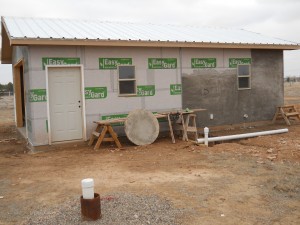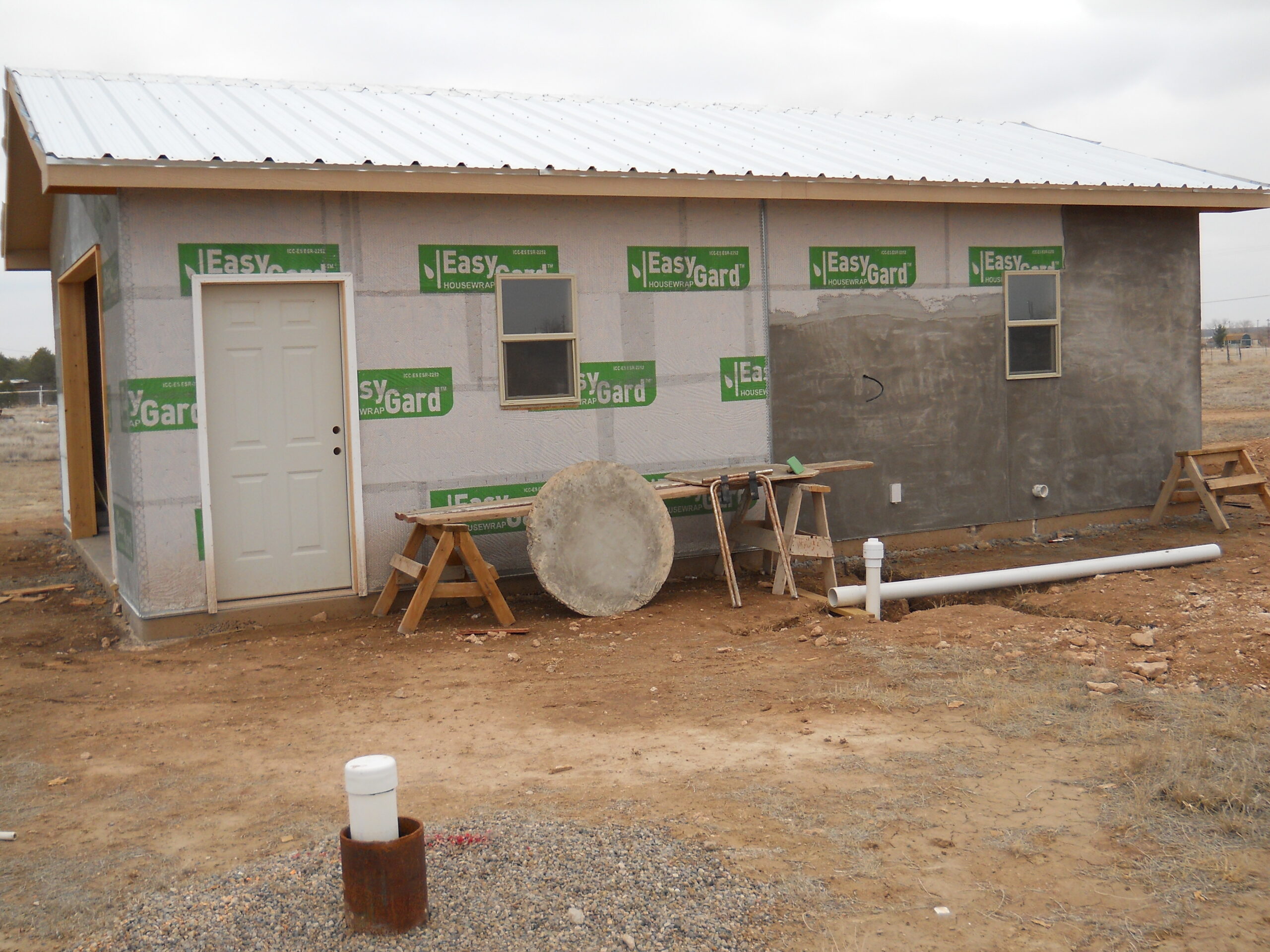
Building a house is a series of linked projects. Assuming you already own your land the project begins with research , learning all there is about the land, the type of home, construction materials, building codes and permitting procedures. From there it progresses to the design phase. The design phase encompasses everything from the house plans, the plot plan, the interconnection of all utilities, design of landscaping and any supporting infrastructure needed to prepare your homestead. The design phase never really ends. Changes are made up to, and in some cases, well after you move in. The more effort you put into the research and the design phases, the less problems and cost overruns you will encounter due to changes and oversights. You also have the permitting process. This requires lots of time and effort to get your well permit, septic permit, building permit, electricity run to the site, and cable/phone hook up.
The projects continue with excavation/site preparation, foundation work/masonry, , rough-in plumbing , framing, roofing, rough-in electrical , more plumbing, installation of HVAC system, , insulation, drywall installation, exterior finishing, , painting, flooring, bathroom/kitchen installation, finish plumbing , finish electrical, miscellaneous items, punch-out list (completion of all minor items needing touch-up/attention) and a final inspection . Each of these phases (and this is not a complete list) impacts the other. Some can be done concurrently, where others must be completely done before moving to the next phase. If errors are made in one phase, they will compound themselves with each subsequent phase until corrected. That costs time and money. The projects that I’ve highlighted in Blue above are the ones I will definitely do myself. The ones in Red will be subcontacted out. The ones in Black are undecided. As you can see from the list above, we should be able to save a significant amount on labor and project management fees.
The Law
Each state is different. In some portions of the state of New Mexico, a person, who is not a licensed contractor, can act as their own Owner-Builder. We are building in a region where you can perform your own plumbing work. Any electrical work requires that you be a licensed electrician. I suppose you could study and sit through the test and get a license, but there are a lot of aspects relating to electricity that are, in my opinion, worth allowing a professional to handle. One could also make the same argument for allowing a licensed plumber to do the work, but in my case I am going to do that work myself. Legally, in the county where I have submitted my application for my building permit, I am allowed to do everything except electrical work.
Equipment
Some jobs require a minimum of equipment to perform. Installing rolled insulation is one of those. You need to cut the rolls, you need a staple gun to secure them, and you need a ladder, or in some cases a small section of scaffolding to comfortably and safely reach the high spots. You will also need eye protection, respiratory equipment, and a set of coveralls to minimize the intrusion of the fiber material into your drawers! Other phases of the construction require a significant outlay of equipment. Some of the equipment can be purchased and retained for later use on the homestead, whereas others can be rented. Depending on how experienced you are with the equipment, the rental costs could exceed the cost of the tool itself if you keep it rented for 2 weeks! I am comfortable renting trenchers and small tractors, but anything else I plan on buying unless I do not see any utility in having that tool on the homestead. We plan to install a metal roof. Some of the bending and long cutting tools can be expensive; unless you plan on doing sheet metal work on the homestead they are not practical to buy. I’m not sure where you would rent those tools either. Based on tools, I do not plan on doing any of the metal roofing work myself. I will also leave the concrete pouring and finishing to a subcontractor. For most of the rest of the jobs, I have set aside an equipment budget to purchase or rent the hand and power tools needed. Then, after the homestead is built, I will have a suitable variety of practical tools for other projects. It’s also a nice excuse to buy more tools!
Sweat of your Brow and Know How
I’ve never built a house before. I’ve acted as a subcontractor on a home, closely supervised the construction of another, and lived in several other homes ranging from new construction to one built in 1893. We’ve moved 18 times over our 30 year marriage. My level of expertise is wide, but not deep. I have a lot to learn, and I have to gain a lot of experience to get it right so that I save money and build a safe house. Three things will help me here; research, reading and good friends who know what they are doing. The friend is not to ask to do the work, but to ask for advice and guidance. In our case we have such a friend and we are making it a business proposition as mentioned in an earlier thread. The combination of his advice, my back-work should result in victory. There are some things that I feel uncomfortable with. Roofing comes to mind. I know absolutely squat about metal roofing, and as mentioned before I do not have the tools to do a proper job. I’m planning to leave that up to a subcontractor. Stucco is another one of those areas that I consider an art. I could probably learn how to do it over time, but there is a reason why underlings apprentice for awhile before being turned loose. We’ll sub that out also. Things like painting, trim work, installing insulation, installing cabinets, sheet rock installation, tile work, I feel comfortable that with a little guidance and some basic tools, I can do those things myself. Framing is an area that I have not made up my mind on. I think I could frame a custom house, but I think it would take me 5 times as long and in the process I might waste the savings of not using a sub on mistakes and re-work. The home I’ve designed has a rather complex roof line, that if not done properly can be costly. Not to mention, a 10:12 pitch roof is tall and that is not something I can do myself. A final thought on framing is I can probably get the house framed and the roof dried in within 2 weeks before the heat of the NM summer kicks in if I subcontract that portion out. After that, nearly everything else will be done in the shade with a breeze blowing through the open walls.
I suppose time becomes the final aspect of deciding what to do yourself. In our case, I am retiring, so my “retirement job” will be building the house. Rather than paying a general contractor to do all of the coordination and scheduling, I will do that myself. If time is a factor and you do not have everyday free to work on the house, it will either take you much longer to finish an owner-builder home, or you will have to subcontract nearly everything out. As far as the time value of money; many of the Owner-Builder books discuss the saving as being in the 10-15% area for this alone. For a $200,000 house, that is as much as $30,000! When you add up the costs of all of the other labor, the amount subcontactors add on to projects for ordering and delivering the materials it could add another significant amount to the savings. The more you do yourself, the more you save. I estimate that the house will be built for a cost that is approximately 60-70% of a turn-key purchase. For a $200k house, that’s a savings of $60-80k.

